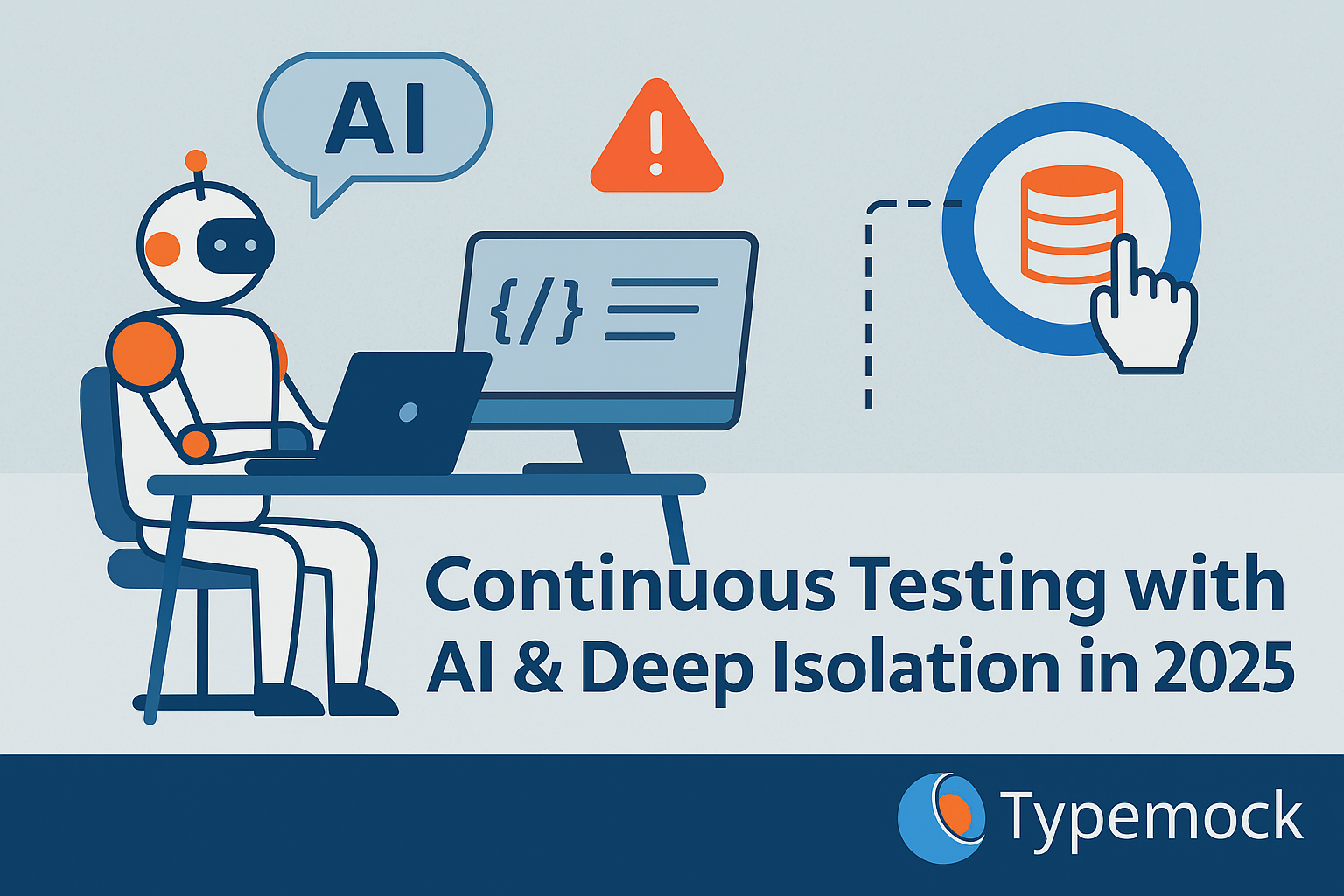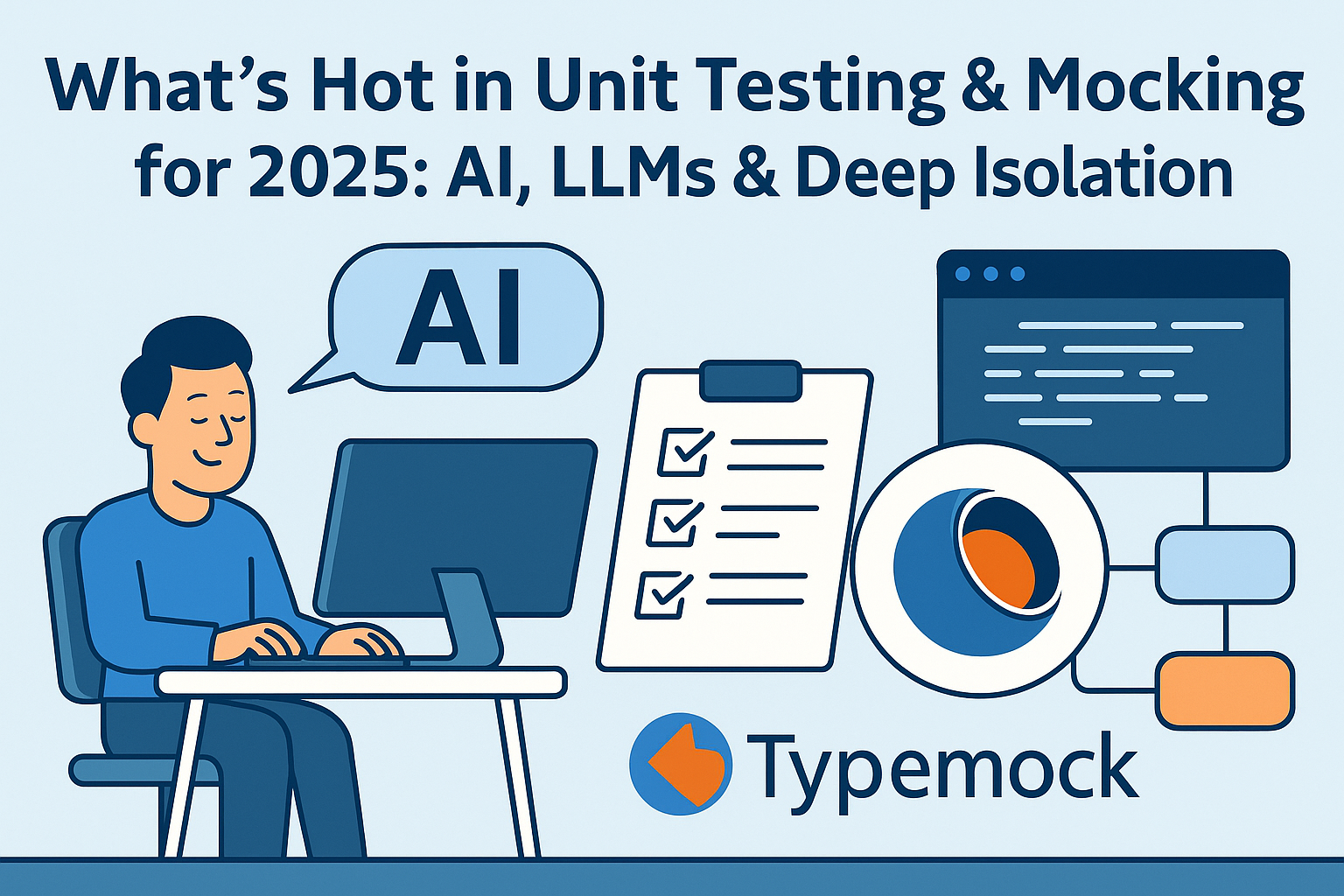Continuous testing with AI is transforming how teams deliver software in 2025. By combining automated unit tests with AI-driven analysis, developers can detect defects earlier, optimize test coverage, and maintain code quality without slowing down delivery. When paired with Typemock’s advanced mocking tools for .NET and C++, AI-powered continuous testing becomes faster, smarter, and more resilient to change.
In 2025, software teams face a paradox: release cycles are faster than ever, yet the cost of defects keeps climbing. Agile sprints, DevOps pipelines, and AI-assisted coding have accelerated delivery- but they’ve also increased the risk of unnoticed regressions.
This is where continuous unit testing comes in. Not just “run the tests before release,” but automated, integrated, always-on feedback that keeps your codebase healthy 24/7.
Whether you’re working in .NET or C++, continuous testing paired with mocking tools like Typemock helps you catch issues at the moment they are introduced, not weeks later.
What is Continuous Unit Testing?
Continuous unit testing means running your tests automatically:
- On every commit (CI)
- During coding (IDE-integrated test runners)
- In nightly builds and pre-release pipelines
The idea is simple: the sooner you know about a break, the faster and cheaper it is to fix.
According to IBM’s System Sciences Institute, fixing a defect after release can cost up to 100× more than if caught during maintenance, and about 4–5× more than if found during design stages.”
Check the original study explained in Functionize’s analysis at Functionize blog.
Why It Matters More in 2025
Three big shifts make continuous testing critical today:
- Code Churn from Agile – Frequent refactoring means silent breakages are common.
- AI-Generated Code – Great for speed, but AI can introduce subtle logic errors.
- Polyglot Codebases – Many teams mix C++, .NET, and cloud APIs in one product.
Without automated, reliable unit tests, each change is a gamble.
How Typemock Makes Continuous Testing Stronger
Most test failures are not caused by actual bugs — they’re caused by brittle tests that fail when code is refactored. Typemock’s mocking capabilities make your tests:
- Isolated: Only the relevant code is executed.
- Resilient: Mock decision boundaries, not internal implementation.
- Comprehensive: Test static methods, private methods, legacy code, and APIs without rewriting them.
Example: Continuous Testing in .NET with Typemock Isolator
|
1 |
[Test]<br>public void Should_CalculateDiscount_WhenUserIsPremium()<br>{<br> var userService = Isolate.Fake.Instance<IUserService>();<br> Isolate.WhenCalled(() => userService.IsPremium("alice")).WillReturn(true);<br><br> var calc = new PriceCalculator(userService);<br> var result = calc.GetPrice("alice", 200);<br><br> Assert.AreEqual(180, result); // 10% discount<br>}<br> |
Why it survives refactoring:
We mock the business decision point (IsPremium) rather than internal logic.
Example: Continuous Testing in C++ with Isolator++ v5
|
1 |
TEST(PriceTests, ShouldCalculateDiscountForPremiumUser) {<br> Isolate a;<br> a.CallTo(UserService::IsPremium).WillReturn(true);<br><br> PriceCalculator calc;<br> auto price = calc.GetPrice("alice", 200);<br><br> ASSERT_EQ(price, 180);<br>}<br> |
With Isolator++ v5, you can run these tests in Linux (GCC 5.4+) and Windows without changing your production code.
How to Implement Continuous Unit Testing in Your Team
- Integrate with CI/CD – Jenkins, Azure DevOps, GitHub Actions.
- Run tests locally – Use IDE test runners to get instant feedback.
- Prioritize test stability – Use Typemock to isolate and mock only what matters.
- Measure coverage over time – Focus on critical business logic, not just lines of code.
Final Thoughts
Continuous unit testing isn’t just about running tests more often – it’s about running the right tests more often.
By combining real-time execution with Typemock’s deep mocking capabilities, you can keep your tests both reliable and future-proof.
🚀 Start now:
Download Typemock for .NET | Download Isolator++ for C++




